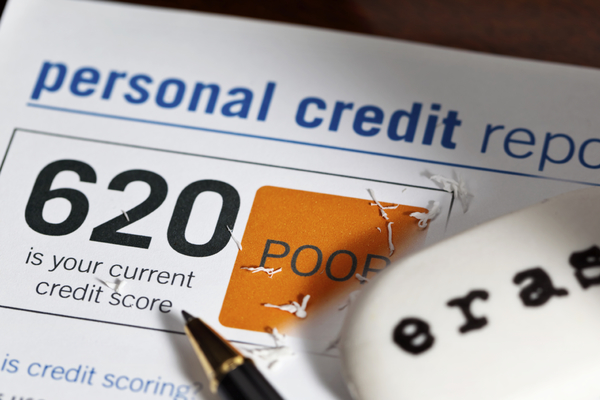
There’s some debate as to whether financial literacy for the extremely poor provides value. I argue that it indeed does, not only in the present, but in the long term, both in improving financial conditions and in breaking the repetitive cycle of poverty.
The argument against financial literacy for the extremely poor is that it doesn’t provide value, that it is insufficient to meet the needs of society’s most impoverished. The argument is that financial literacy is for the middle and upper classes, those with financial resources to manage and grow. Let’s look at what is right and not-so-right with this argument.
The Argument Against Financial Literacy for the Poor
Financial literacy from its roots has aimed for inclusivity. A primary objective of the financial literacy movement is to reduce the socioeconomic gap, which, naturally, is geared toward improving the financial conditions of the poor. You could reduce the socioeconomic gap by reducing the wealth of the middle and upper classes, but making everyone equally poor is not a serious solution to a most serious problem.
Lack of financial literacy is not causal for poverty.
As a general rule, people do not become poor as a result of lack of financial literacy. The division of opinion is the efficacy of financial literacy in moving someone out of poverty. Or is it?
Financial literacy will not move someone from poverty, generally. That is something the proponents of financial literacy should concede; financial literacy isn’t causal for poverty, and by itself will not solve poverty. It will take more than financial literacy. But that is not the end of the issue.
The Argument in Support of Financial Literacy for the Poor
Financial literacy lacks a consensus definition, so we’ll run through a couple of the most prevalent ones to examine their fit.
Financial literacy is defined as knowledge of and access to the financial systems. Though lack of knowledge and access to financial systems is not the overriding cause of poverty, it should be readily apparent that for someone to sustain themselves outside of poverty they would benefit from knowledge of and access to the financial systems.
Financial literacy is defined as knowledge of financial options and the ability to select appropriately between them. As with the other definition, failure here is unlikely causal for poverty, but success here would be essential for someone to sustain themselves outside of poverty.
How Financial Literacy Can and Can’t Help
Financial literacy helps people make better financial decisions. It is clear that better financial decisions benefit those with a lot of money, and better financial decisions benefit those with a bit of money. Financial literacy will benefit anyone who deals with money on any level. It may not be the most important thing to someone who cannot pay their bills, because they don’t see benefit in the moment.
Extreme poverty has a common co-condition of anxiety and stress related to finances.
This is an area where financial literacy can help. Financial literacy may not solve all the problems for the most impoverished, but it can let them know if they are doing the best they can with what they have, and if not, where some little improvement might be made. Stress and anxiety are not supporters of good decisions. Stress and anxiety lead to short-term thinking, and consequently decisions that are based on short-term results.
Social Solutions
There are a variety of social solutions available to alleviate poverty. On the whole, they do good, but on the whole they are not alleviating poverty. The system is broken.
The fastest, most cost-effective, and permanent way out of poverty is employment. Nothing can impact poverty the way a reasonably well-paying job can. But jobs programs are not the primary social solution. Nor will they necessarily work without other solutions in parallel.
Cash solutions can have an immediate effect on moving someone out of poverty, but cash solutions don’t keep someone out of poverty unless you keep giving them cash. Jobs solutions may cost more in the short term, but can be a one-time expense rather than an ongoing expense.
Jobs programs, to be effective, may need parallel training programs, and child-care programs, and other support necessary to build a bridge out of poverty.
No one wants to stay in poverty. Many, however, don’t see a way out. It should be part of that solution. It won’t lift most people out of poverty; that isn’t a reasonable expectation. But there is no one who would not or could not benefit from making better financial decisions.
The Bottom Line
Poverty in America is a problem. And it is everyone’s problem. Poverty hurts the poor the most, but it hurts everyone to some degree. And it doesn’t need to be this way.
There is no one solution. We do know that what’s happening now isn’t working. Cash programs can hold someone out of poverty while they are in place. Cash programs alleviate poverty temporarily; they don’t break the cycle.
To break the cycle, poor individuals who can work at jobs that can lift them out of poverty need the training and opportunity to be able to do that. In many cases, they will need other support as well, at least on a transitional basis. Financial literacy can and should be a part of breaking the cycle of poverty. There is no one too poor to benefit from making better financial decisions.
The post Financial Literacy for the Extremely Poor appeared first on CentSai.
from Stories and Tips for Ways to Earn Money Now | CentSai https://ift.tt/HtQjX91
Comments
Post a Comment
We will appreciate it, if you leave a comment.